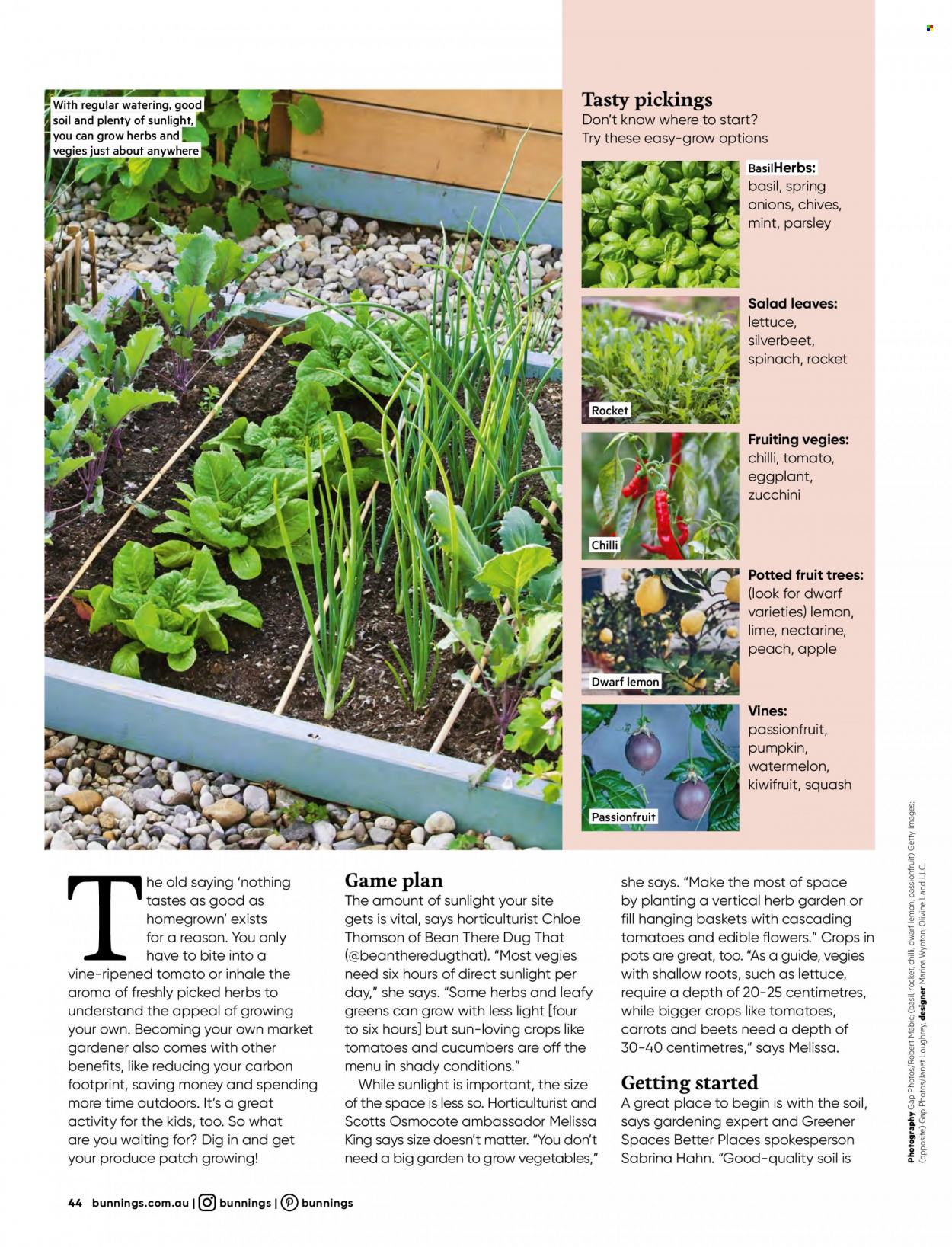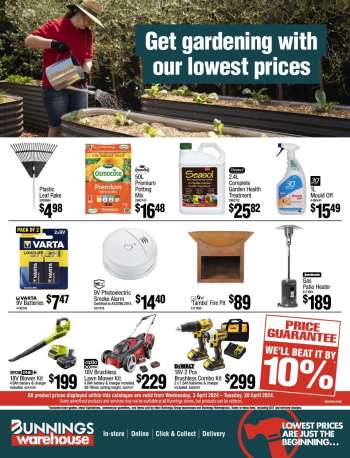Tasty pickings
With regular watering, good
soil and plenty of sunlight,
you can grow herbs and
vegies just about anywhere
Don’t know where to start?
Try these easy-grow options
BasilHerbs:
basil, spring
onions, chives,
mint, parsley
Salad leaves:
lettuce,
silverbeet,
spinach, rocket
Rocket
Fruiting vegies:
chilli, tomato,
eggplant,
zucchini
Chilli
Potted fruit trees:
(look for dwarf
varieties) lemon,
lime, nectarine,
peach, apple
Dwarf lemon
Passionfruit
T
he old saying ‘nothing
tastes as good as
homegrown’ exists
for a reason. You only
have to bite into a
vine-ripened tomato or inhale the
aroma of freshly picked herbs to
understand the appeal of growing
your own. Becoming your own market
gardener also comes with other
benefits, like reducing your carbon
footprint, saving money and spending
more time outdoors. It’s a great
activity for the kids, too. So what
are you waiting for? Dig in and get
your produce patch growing!
44 bunnings.com.au |
bunnings |
Game plan
The amount of sunlight your site
gets is vital, says horticulturist Chloe
Thomson of Bean There Dug That
(@beantheredugthat). “Most vegies
need six hours of direct sunlight per
day,” she says. “Some herbs and leafy
greens can grow with less light [four
to six hours] but sun-loving crops like
tomatoes and cucumbers are off the
menu in shady conditions.”
While sunlight is important, the size
of the space is less so. Horticulturist and
Scotts Osmocote ambassador Melissa
King says size doesn’t matter. “You don’t
need a big garden to grow vegetables,”
bunnings
she says. “Make the most of space
by planting a vertical herb garden or
fill hanging baskets with cascading
tomatoes and edible flowers.” Crops in
pots are great, too. “As a guide, vegies
with shallow roots, such as lettuce,
require a depth of 20-25 centimetres,
while bigger crops like tomatoes,
carrots and beets need a depth of
30-40 centimetres,” says Melissa.
Getting started
A great place to begin is with the soil,
says gardening expert and Greener
Spaces Better Places spokesperson
Sabrina Hahn. “Good-quality soil is
Photography Gap Photos/Robert Mabic; (basil, rocket, chilli, dwarf lemon, passionfruit) Getty Images;
(opposite) Gap Photos/Janet Loughrey, designer Marina Wynton, Olivine Land LLC.
Vines:
passionfruit,
pumpkin,
watermelon,
kiwifruit, squash




